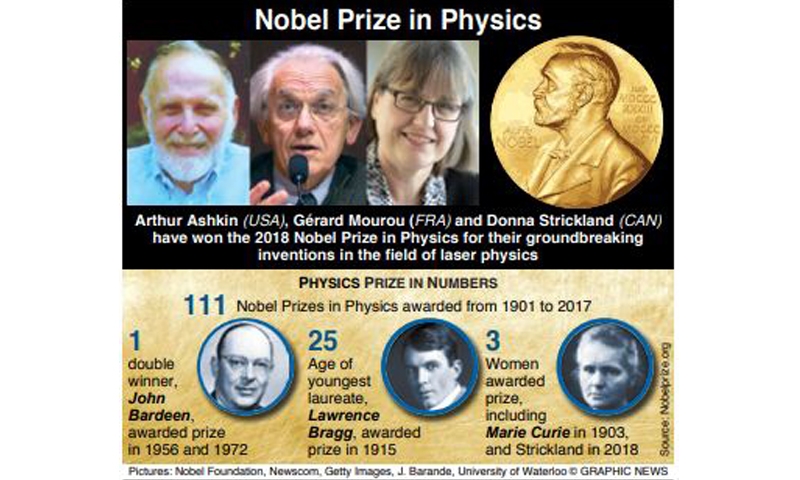Laser pioneers win Nobel Physics Prize
Three scientists yesterday won the Nobel Physics Prize for inventing optical lasers that have paved the way for advanced precision instruments used in corrective eye surgery and in industry, the jury said. Arthur Ashkin of the United States won one half of the nine million Swedish kronor (about $1.01 million or 870,000 euros) prize, while Gerard Mourou of France and Donna Strickland of Canada shared the other half.
Ashkin, 96, was honoured for his invention of “optical tweezers” that grab particles, atoms, viruses and other living cells with their laser beam fingers. With this he was able to use the radiation pressure of light to move physical objects, “an old dream of science fiction,” the Royal Swedish Academy of Sciences said.
A major breakthrough came in 1987 when Ashkin used the tweezers to capture living bacteria without harming them, the Academy noted. Ashkin, who made his discovery while working at AT&T Bell Laboratories from 1952 to 1991, is the oldest winner of a Nobel prize, beating out American Leonid Hurwicz who was 90 when he won the 2007 Economics Prize.
Meanwhile Mourou, 74, and Strickland -- only the third woman to win the Physics Prize -- won for helping develop a method to generate ultra-short optical pulses, “the shortest and most intense laser pulses ever created by mankind,” the jury said. Their technique is now used in corrective eye surgery. Mourou was affiliated with the Ecole Polytechnique of France and the University of Michigan in the US, while Strickland, his student, is a professor at the University of Waterloo in Canada.
Related Posts

